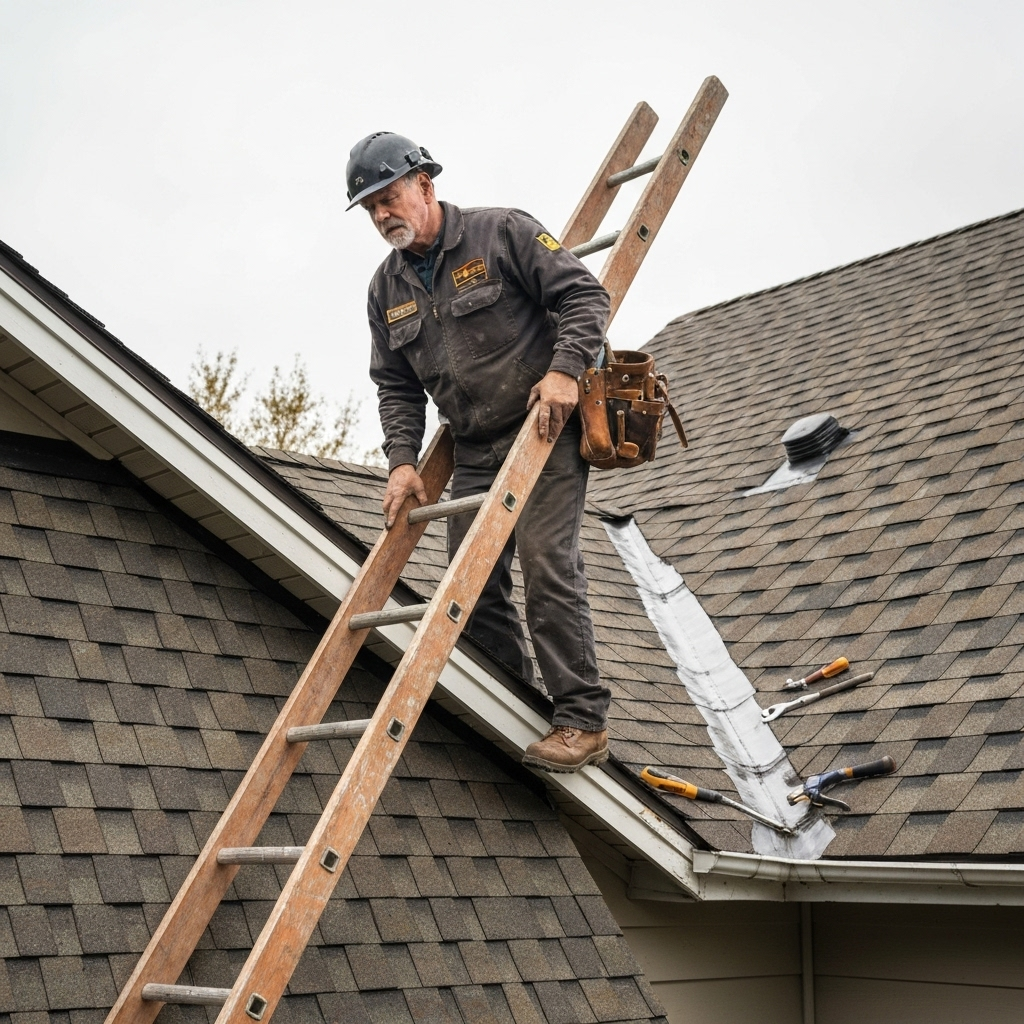13 Smart Hacks to Cut Your Bills (Without Cutting Your Lifestyle)

Deal Sleuths Team
September 9, 2025

Why keep paying more than you need to? Most of us are bleeding money on everyday services — insurance, utilities, home repairs — without even realizing it. The good news? We tracked down the hidden gems that actually save people serious cash. No gimmicks, just real deals that put money back where it belongs: your pocket. Scroll through and see how much you could be saving this month.
1. Stop Overpaying for Car Insurance (Many Drivers Report Savings)

Insurance companies use complex algorithms to calculate your premium based on hundreds of factors — your driving record, credit score, location, vehicle type, and even your education level. What many drivers don't realize is that these factors are weighted differently by each company.
This means you could be a "high-risk" driver to one insurer and "preferred" to another, resulting in dramatically different rates for identical coverage. The only way to find your best rate is to compare multiple companies simultaneously.
Licensed insurance comparison platforms work with dozens of A-rated insurers to provide real quotes based on your specific profile. The process typically takes 5-10 minutes and requires basic information like your current policy details, driving history, and vehicle information.
Many drivers report savings of $300–$500 annually when switching, though individual results vary based on current coverage, driving record, and available discounts. Some drivers save even more by bundling auto and home insurance or qualifying for safe driver discounts.
2. Your Home Insurance is Probably Too Expensive (Here's the Fix)

Homeowners insurance is one of those "set it and forget it" expenses — which is exactly why you're probably overpaying. Insurance companies love loyal customers who never shop around.
If you haven't compared rates in the last two years, you're likely leaving money on the table. Insurance rates fluctuate constantly based on market conditions, your credit score improvements, and new discount programs. What was competitive three years ago might be highway robbery today.
The process takes less time than your morning coffee routine. Most comparison sites can generate quotes from multiple insurers in under 10 minutes. You just need your current policy details and basic home information.
Here's what most homeowners don't realize: you can often get better protection for less money by bundling with auto insurance, if available. The combined discounts can sometimes be 15–25% off both policies.
The savings add up fast. Many homeowners cut their premiums by 10–25% without losing coverage. Some even upgrade their protection and still pay less than their old policy.
3. Your Roof is Costing You Money (Even If It Looks Fine)

Most homeowners ignore their roof until water starts dripping into their living room. By then, you're looking at emergency repairs that cost 3x more than preventive maintenance.
Here's what many homeowners don't realize: small issues caught early cost hundreds to fix. The same problems left alone? Thousands. A missing shingle today becomes rotted decking, damaged insulation, and interior water damage tomorrow.
Smart homeowners get free roof inspections annually. Many roofers offer free inspections; policies vary. Professional roofers can spot problems invisible from the ground — loose flashing, worn seals, damaged gutters that could cause major headaches down the road.
Many roofers offer free inspections, but the peace of mind is priceless. Plus, many roofing companies offer financing that makes necessary repairs affordable instead of devastating.
4. Cut Your Energy Bills While Boosting Home Value

Old windows are energy vampires — sucking money out of your wallet every month through higher heating and cooling costs. But here's what most people don't realize: new windows may offset costs over time.
Energy-efficient window replacements can slash your utility bills often 10–30%, depending on your current windows and climate. The technology in modern windows is genuinely impressive — triple-pane glass, argon gas fills, and low-E coatings that block heat transfer.
- Professional installation with comprehensive warranties
- Immediate comfort improvement (no more drafts or hot spots)
- Can increase home value and improve comfort
- Reduced outside noise for a quieter home environment
- Lower maintenance required after installation
Most homeowners are surprised by how much their monthly energy bills drop. In extreme climates, the savings can be $100+ per month during peak seasons. Over 10-15 years, that adds up to serious money.
The best part? Many window companies offer financing options that make your monthly payment manageable while improving your home's comfort and value. The combination of energy savings and increased home value may offset the investment over time.
5. Protect Your Family's Future for Pennies a Day

Nobody likes thinking about life insurance, but here's the reality: if something happens to you, your family could face financial disaster on top of emotional trauma.
The good news? Protection can be more affordable than you think. Term life insurance rates vary by age, health, and coverage amount, but many healthy applicants find coverage surprisingly affordable. Getting a quote takes 2 minutes and costs nothing.
The application process has been streamlined dramatically. Some applicants qualify for accelerated underwriting without medical exams or lengthy paperwork. Term life insurance is particularly affordable for younger, healthy applicants.
Your family's security is worth more than a few dollars a month. Don't let procrastination leave them vulnerable when they need protection most.
6. Browser Extensions That Find Coupon Codes Automatically

Coupon code browser extensions work by maintaining databases of active promotional codes from thousands of retailers. When you reach a checkout page, the extension automatically tests available codes to find working discounts.
Popular extensions like Honey, Capital One Shopping, and Rakuten have partnerships with major retailers and earn commissions when you make purchases. In exchange, they provide the service free to users and often share cashback rewards.
Here's how these tools typically work:
- Automatically test coupon codes at checkout on supported sites
- Compare prices across participating retailers for the same item
- Offer cashback percentages that vary by store and promotion
- Track price history and alert you to significant drops
- Work on thousands of e-commerce sites, though coverage varies
Savings depend entirely on your shopping habits and the retailers you frequent. Regular online shoppers often report annual savings of $50–$200, though results vary significantly. The extensions are free to use, earning revenue through affiliate commissions.
Important note: These extensions collect browsing data to function effectively. Review privacy policies to understand what information is collected and how it's used before installing.
7. Unlock Exclusive Discounts Most People Don't Know About

Think membership organizations are just for retirees? Think again. Anyone 50+ can join AARP, and the discounts are seriously impressive.
Members typically save hundreds per year on stuff they're buying anyway. The restaurant discounts alone can pay for the membership — significant savings at popular chains plus exclusive deals at local establishments.
Here's what you get:
- Restaurant discounts at hundreds of locations
- Travel deals on hotels, car rentals, and vacation packages
- Prescription drug discounts at major pharmacy chains
- Insurance discounts on auto, home, and health coverage
Annual membership is $16 (about $1.33/month); many members recoup the cost quickly through regular use of discounts.
8. Final Expense Insurance: Planning Ahead for End-of-Life Costs

According to the National Funeral Directors Association, the median cost of a funeral with burial was $7,848 in 2021, while cremation services averaged $6,971. These costs continue rising annually, and many families are unprepared for the immediate financial burden.
Final expense insurance, also called burial insurance, is a type of whole life insurance specifically designed to cover end-of-life expenses. Unlike term life insurance, these policies build cash value and remain in force for your entire life as long as premiums are paid.
Key characteristics of final expense policies:
- Coverage amounts typically range from $5,000 to $25,000
- Guaranteed acceptance for most applicants ages 50-85 (health questions may apply)
- Level premiums that don't increase with age
- Graded death benefit — full benefits after 2-3 years, premium refund if death occurs earlier
- Cash value accumulation that can be borrowed against
Premiums vary significantly based on age, health, coverage amount, and insurance company. A healthy 60-year-old might pay $30-50 monthly for $10,000 in coverage, while a 75-year-old could pay $80-120 for the same amount.
These policies serve a specific purpose: ensuring your final expenses don't burden your family financially. They're not intended as wealth-building tools or major income replacement, but rather as practical planning for inevitable end-of-life costs.
9. Turn Your Home Equity Into Cash (Without Selling)

If you've been paying your mortgage for a few years, you're probably sitting on a goldmine without realizing it. Home equity lines of credit (HELOCs) let you access that equity for major expenses at rates typically lower than credit cards or personal loans.
Think of it as a credit card backed by your home's value. You only pay interest on what you actually use, and you can draw funds as needed during the draw period. Many homeowners use HELOCs for home improvements, debt consolidation, or major purchases.
Here's what makes HELOCs attractive right now:
- Interest rates often lower than credit cards or personal loans
- Interest may be tax-deductible for home improvements (consult tax advisor)
- Flexible access — use what you need, when you need it
- No prepayment penalties on most HELOCs
- Can improve credit utilization by paying off high-interest debt
The application process has been streamlined significantly. Many lenders offer online applications with quick pre-approval decisions. Some even waive appraisal fees for qualified borrowers.
Important note: Your home serves as collateral, so responsible use is essential. But for homeowners with solid equity and steady income, a HELOC can be a powerful financial tool for major expenses or strategic debt management.
10. Access Your Home's Value Without Monthly Payments (Ages 62+)

If you're 62 or older and own your home, you might be sitting on a significant financial resource. Reverse mortgages allow eligible homeowners to convert part of their home equity into cash without selling their home or making monthly mortgage payments.
Unlike traditional mortgages where you make payments to the lender, reverse mortgages work in the opposite direction. The lender makes payments to you, either as a lump sum, monthly payments, or a line of credit you can access as needed.
Key features of reverse mortgages:
- Available to homeowners 62 and older who meet eligibility requirements
- No monthly mortgage payments required (property taxes and insurance still apply)
- You retain ownership and can live in your home
- Loan becomes due when you sell, move, or pass away
- Non-recourse loan — you never owe more than the home's value
The amount you can borrow depends on your age, home value, current interest rates, and the specific reverse mortgage program. Generally, older borrowers and higher home values qualify for larger loan amounts.
Important considerations: Reverse mortgages have fees and interest that accumulate over time. You must continue paying property taxes, homeowners insurance, and maintain the property. HUD-approved counseling is required before closing to ensure you understand all terms and alternatives.
For eligible homeowners who want to access their equity while remaining in their home, reverse mortgages can provide financial flexibility during retirement years.
11. Stop Paying Full Price for Home Repairs (Smart Protection Plan)

When your dishwasher dies on a Sunday night or your AC quits during a heat wave, you're looking at emergency repair bills that can hit $500-$1,500+ per incident. Home warranties provide a different approach to managing these inevitable breakdowns.
A home warranty is a service contract that covers the repair or replacement of major home systems and appliances when they break down due to normal wear and tear. Unlike homeowners insurance (which covers damage from disasters), home warranties focus on the stuff that simply wears out over time.
Typical coverage includes:
- Kitchen appliances (refrigerator, dishwasher, oven, microwave)
- HVAC systems (heating and air conditioning)
- Water heater and plumbing systems
- Electrical systems and ceiling fans
- Washer and dryer (often available as add-on coverage)
Here's how it works: When a covered item breaks, you contact the warranty company, pay a service call fee (typically $75-$125), and they send a qualified technician. If the item can't be repaired, they replace it with a comparable model.
Annual plans typically range from $400-$800 depending on coverage level and home size. For homeowners with older appliances or those who prefer predictable repair costs, warranties can provide peace of mind and budget protection against unexpected breakdowns.
Important note: Home warranties have limitations, exclusions, and caps on coverage amounts. Pre-existing conditions aren't covered, and there may be waiting periods for certain items. Review contract terms carefully to understand what's included and excluded.
12. Support Your Memory and Focus as You Age

As we age, many people notice changes in memory, focus, and mental clarity. While this is often a normal part of aging, research suggests that certain nutrients and compounds may help support cognitive function.
Brain health supplements typically contain ingredients that have been studied for their potential cognitive benefits. Some popular ingredients include omega-3 fatty acids, B-vitamins, antioxidants from berries, and herbal extracts like ginkgo biloba and ashwagandha.
What research suggests about cognitive support:
- Antioxidants may help protect brain cells from oxidative stress
- B-vitamins play important roles in brain function and energy metabolism
- Omega-3 fatty acids are essential components of brain cell membranes
- Some herbal extracts have been studied for stress management and focus
- Individual results vary significantly based on many factors
It's important to note that supplements are not regulated like medications, and individual responses vary widely. What works for one person may not work for another, and results typically take weeks or months to become apparent, if at all.
Before starting any supplement regimen, especially if you take medications or have health conditions, consult with your healthcare provider. They can help determine if cognitive supplements are appropriate for your individual situation and health goals.
Many companies offer trial periods or satisfaction guarantees, allowing you to evaluate whether a particular supplement seems beneficial for your cognitive wellness routine.
13. Safe Bathing Solution for Aging in Place

For many seniors, the simple act of bathing becomes increasingly challenging and potentially dangerous. Traditional bathtubs require stepping over high walls, creating slip and fall risks that send thousands of older adults to emergency rooms each year.
Walk-in tubs are designed specifically to address these safety concerns while maintaining the comfort and therapeutic benefits of bathing. These specialized tubs feature low-threshold doors, built-in seating, and safety grab bars to make bathing accessible for people with mobility limitations.
Key safety and comfort features typically include:
- Low step-in height (typically 3-7 inches vs. 15+ inches for standard tubs)
- Built-in seating with textured surfaces for stability
- Multiple grab bars positioned for safe entry and exit
- Anti-slip flooring and leak-proof door seals
- Optional therapeutic features like hydrotherapy jets or heated surfaces
Installation typically requires professional modification of existing bathroom space and plumbing connections. Many manufacturers offer financing options to make the investment more manageable, and some insurance plans may provide partial coverage when medically necessary.
Costs vary significantly based on size, features, and installation requirements, typically ranging from several thousand to over ten thousand dollars. While this represents a significant investment, many families find the safety benefits and ability to age in place make it worthwhile.
Before making a decision, consider having a free in-home consultation to assess your specific bathroom layout, mobility needs, and available options. Many companies offer these consultations without obligation to help you understand what's involved.